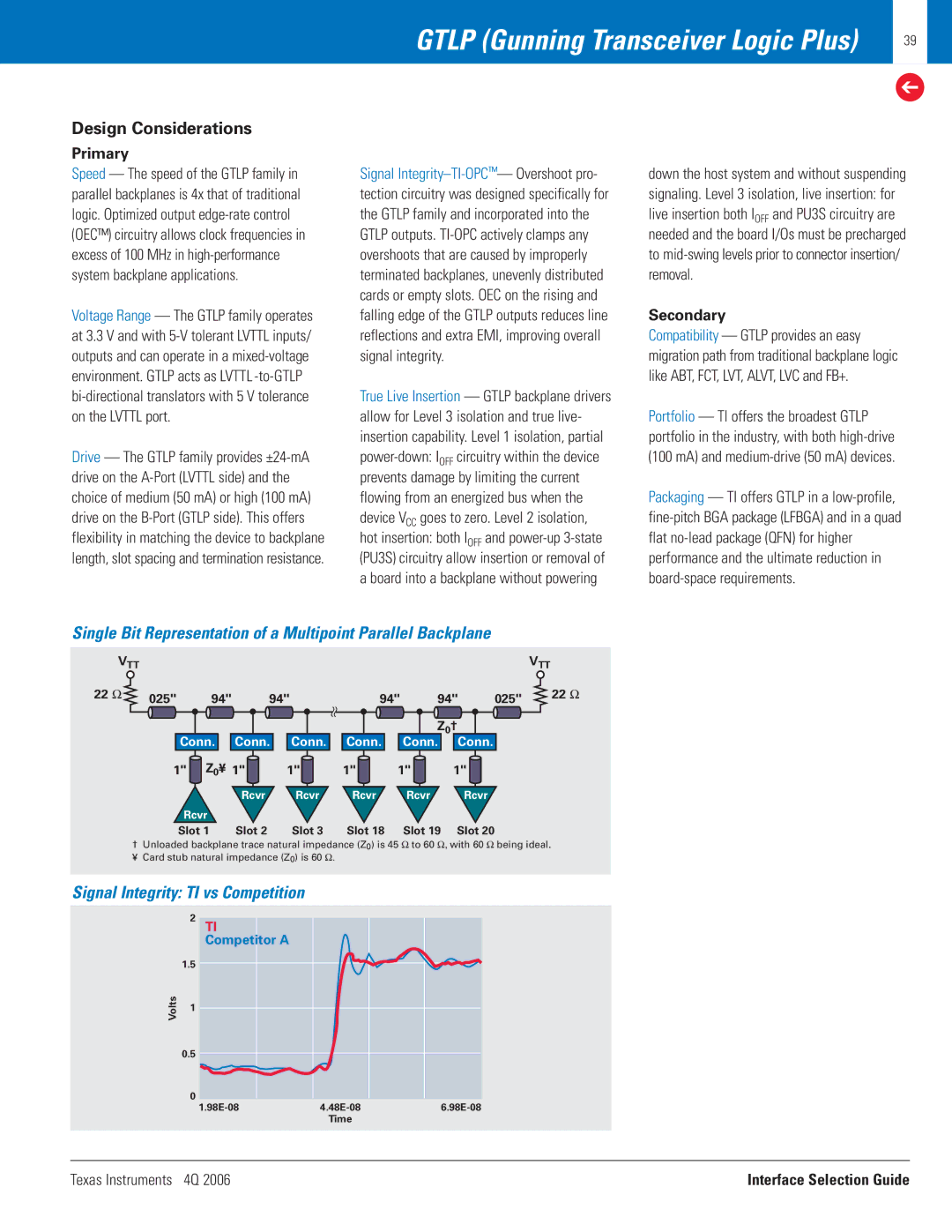
Design Considerations
Primary
GTLP (Gunning Transceiver Logic Plus) | 39 |
|
|
| ➔ |
Speed — The speed of the GTLP family in parallel backplanes is 4x that of traditional logic. Optimized output
Voltage Range — The GTLP family operates at 3.3 V and with
Drive — The GTLP family provides
Signal
True Live Insertion — GTLP backplane drivers allow for Level 3 isolation and true live- insertion capability. Level 1 isolation, partial
down the host system and without suspending signaling. Level 3 isolation, live insertion: for live insertion both IOFF and PU3S circuitry are needed and the board I/Os must be precharged to
Secondary
Compatibility — GTLP provides an easy migration path from traditional backplane logic like ABT, FCT, LVT, ALVT, LVC and FB+.
Portfolio — TI offers the broadest GTLP portfolio in the industry, with both
Packaging — TI offers GTLP in a
Single Bit Representation of a Multipoint Parallel Backplane
VTT |
|
|
|
|
|
|
| VTT |
22 Ω | 0.25" | 94". | 94". | 94". | 94". | 025". | 22 Ω | |
|
| |||||||
|
|
|
|
|
| Z0† |
|
|
| Conn. Conn. Conn. Conn. Conn. Conn. |
|
| |||||
| 1" Z0¥ 1" | 1" | 1" | 1" | 1" |
|
| |
|
| Rcvr | Rcvr | Rcvr | Rcvr | Rcvr |
|
|
| Rcvr |
|
|
|
|
|
|
|
| Slot 1 | Slot 2 | Slot 3 | Slot 18 | Slot 19 Slot 20 |
|
| |
†Unloaded backplane trace natural impedance (Z0) is 45 Ω to 60 Ω, with 60 Ω being ideal. ¥ Card stub natural impedance (Z0) is 60 Ω.
Signal Integrity: TI vs Competition
Volts
2
TI
Competitor A
1.5
1
0.5
0
| Time |
|
Texas Instruments 4Q 2006 | Interface Selection Guide |
